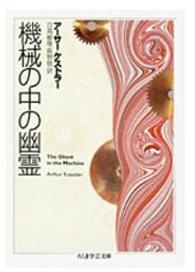- ホーム
- > 洋書
- > 英文書
- > Science / Mathematics
Full Description
Tradi tionally, the International lTV - Conferences on Biomate rials are focussing on problems in Biomedical Engineering, problems, which are still unsolved, of main interest, and which are of interdisciplinary character. In 1983, the Division of Biomedical Engineering of the Institute of Textile Technology and Chemical Engineering, Denkendorf, started wi th a conference about the use of polyurethanes in biomedicine. Three years later,. in 1986, progress in development and use of polyurethanes was selected as conference topic. It had to be realized that degradation problems were still dominating the discussions. The main discussion topics were: What are the causes for the degradation? How can one prevent them? What are the degradation products, and do they affect the human body? How can one simu late the degradation? How can one accelerate the in vitro tests and how can the results predict the in vivo behaviour of the material? How do in vitro tests correlate with animal tests and the behaviour in the human body? At the third conference in 1989, the speakers focused on the use of textiles in medicine. Again the problem of degradation was discussed intensively and demonstrated by the failure of textile implants, the degradation of aramide polymers or the degradation of resorbable suture materials. The examples make clear, that degradation may be a desired or undesired property of an implant.
Contents
I. Evaluation of Degradation in Vitro: Physical, Chemical and Biological Test Methods.- 1. Testing of PUR-Biomaterials for Enzymatically Induced Degradation: An in Vitro Study.- 2. Chemical Alteration of Biomer™ as a Result of Oxidative Degradation.- 3. In Vitro Degradation Test for Screening of Biomaterials.- II. Degradation Phenomena of "Non-Degradable" Biomaterials.- 4. The Biodegradation of Nondegradable Polymers.- 5. A Comparison of in Vivo Degradation of Novel Polyurethanes with Performance in in Vitro Accelerated Tests.- III. The Resorbable Biomaterials and Their DegradaTion Mechanisms.- 6. Accelerated Degradation Test on Resorbable Polymers.- 7. Kinetics of Resorption of Different Suture Materials Depending on the Implantation Site and the Speeles.- IV. The Inflüence of Polymer Modification And Processing Parameters On Degradation.- 8. Tissue Response to Resorbable Synthetic Polymers.- 9. In Vitro Degradation of Polylactides Depending on Different Solution Processes.- 10. Tissue Response to Pre-Degraded Poly(L-Lactide).- V. Clinical Application Of Resorbable BiomateRials: Sutures.- 11. Modern Absorbable Suture Materials and Biodegradable Anastomotic Rings in Gastrointestinal Surgery.- 12. A Novel Bioabsorbable Monofilament Surgical Suture made from (?-Caprolactone-L-Lactide) Copolymer.- VI. Clinical Application of Resorbable Biomaterials In Reconstrüctive Surgery.- 13. Clinical Application of Resorbable Biomaterials in Reconstructive Surgery.- 14. Biodegradable PLA Versus Stainless Steel Intramedullary Devices for Fracture Fixation. A Comparative Histological Study.- Round Table Discussion At The End Of The Conference.- Keywords.- Author Index.- Acknowledgement.

![Kuromi×a-jolieおとなっぽーちBOOK [バラエティ]](../images/goods/ar2/web/imgdata2/42990/4299065735.jpg)






